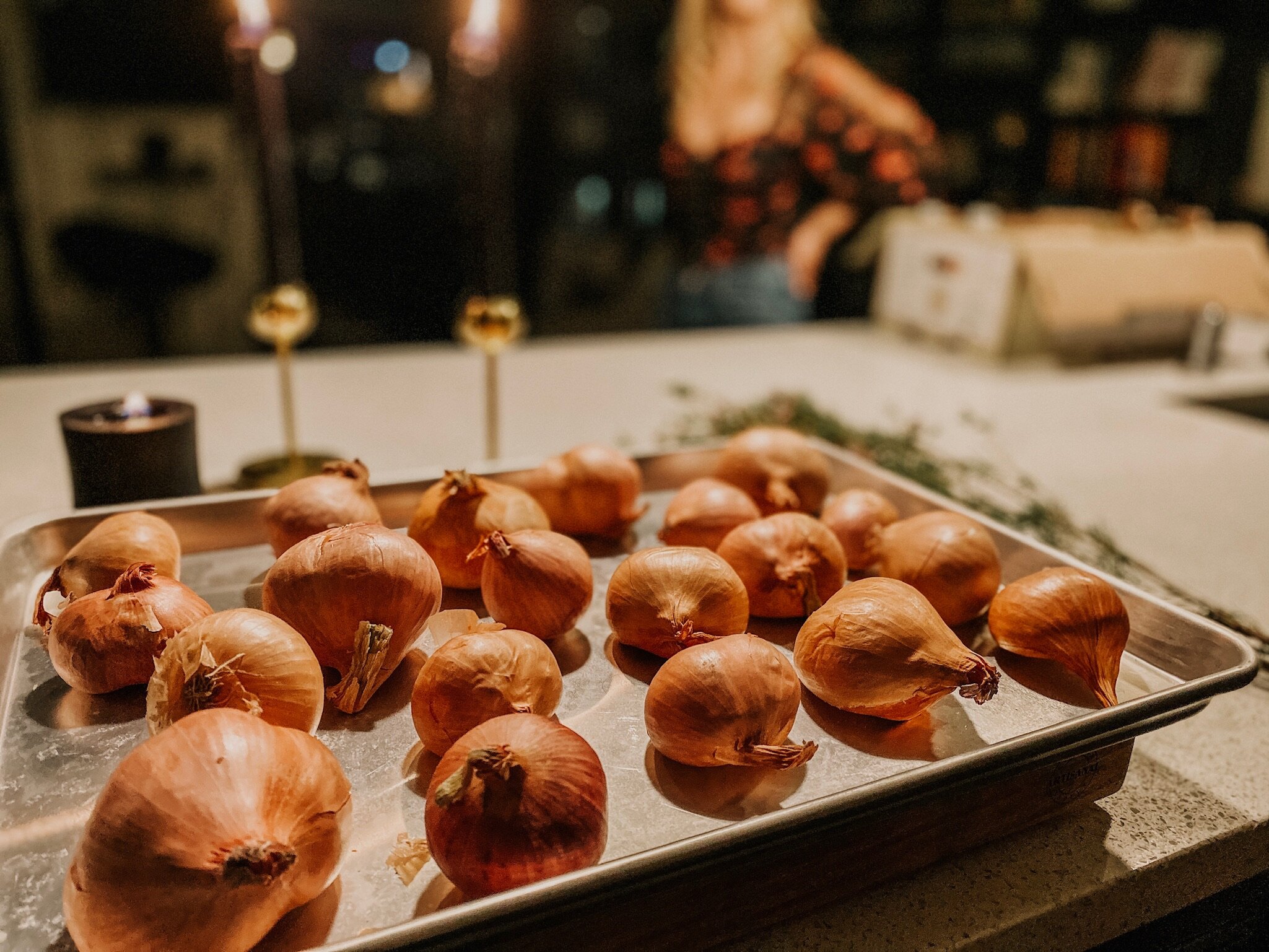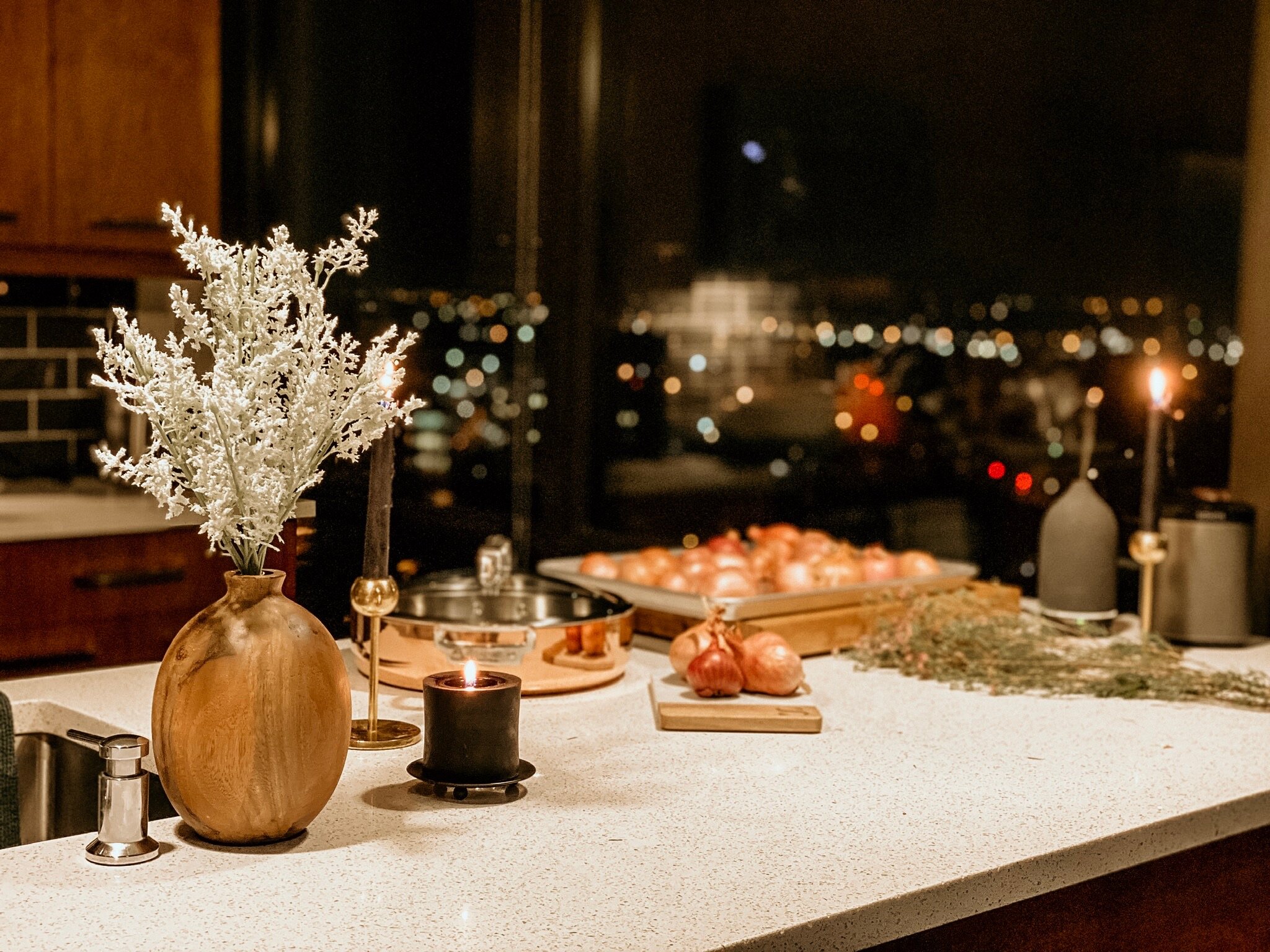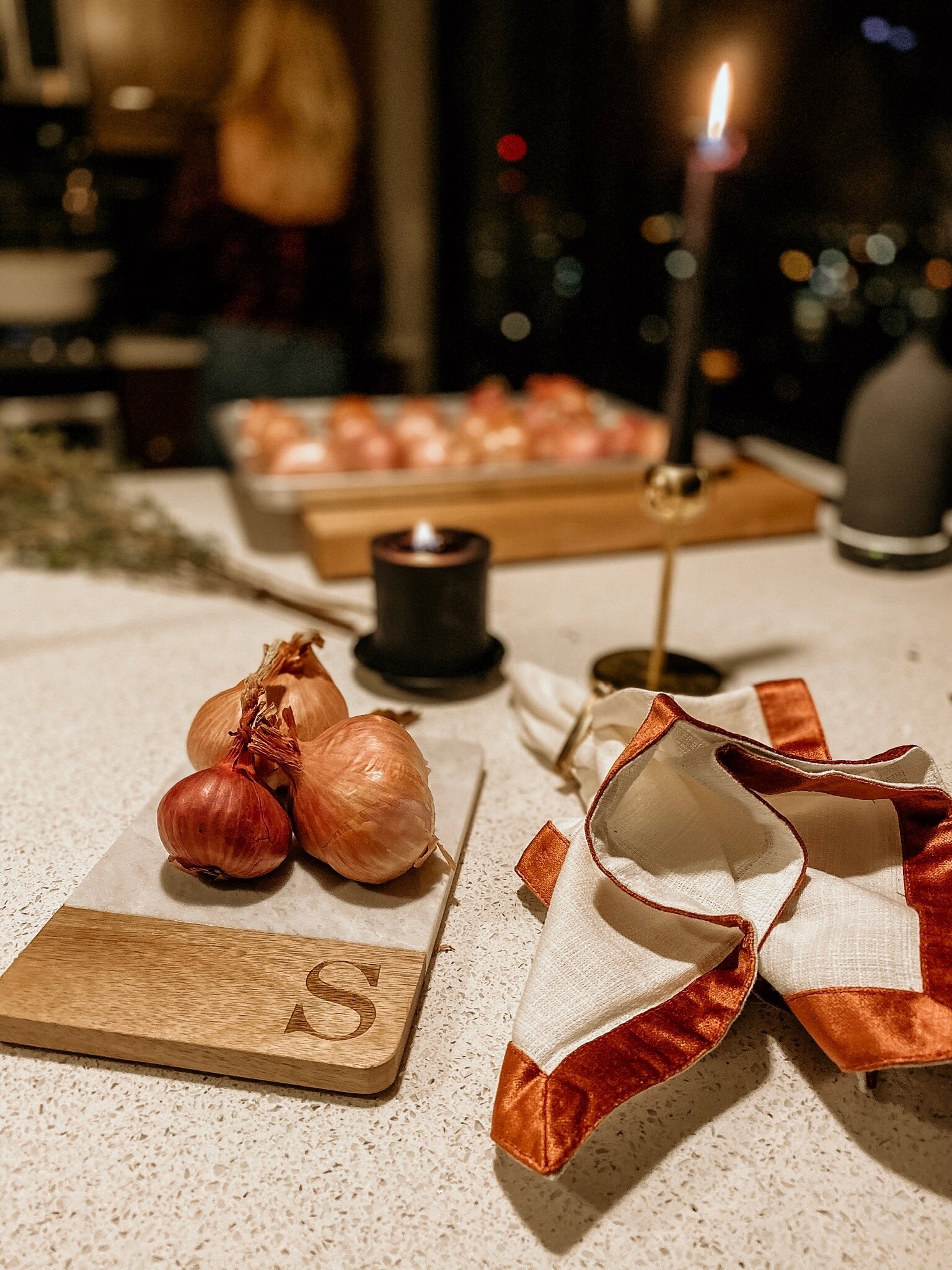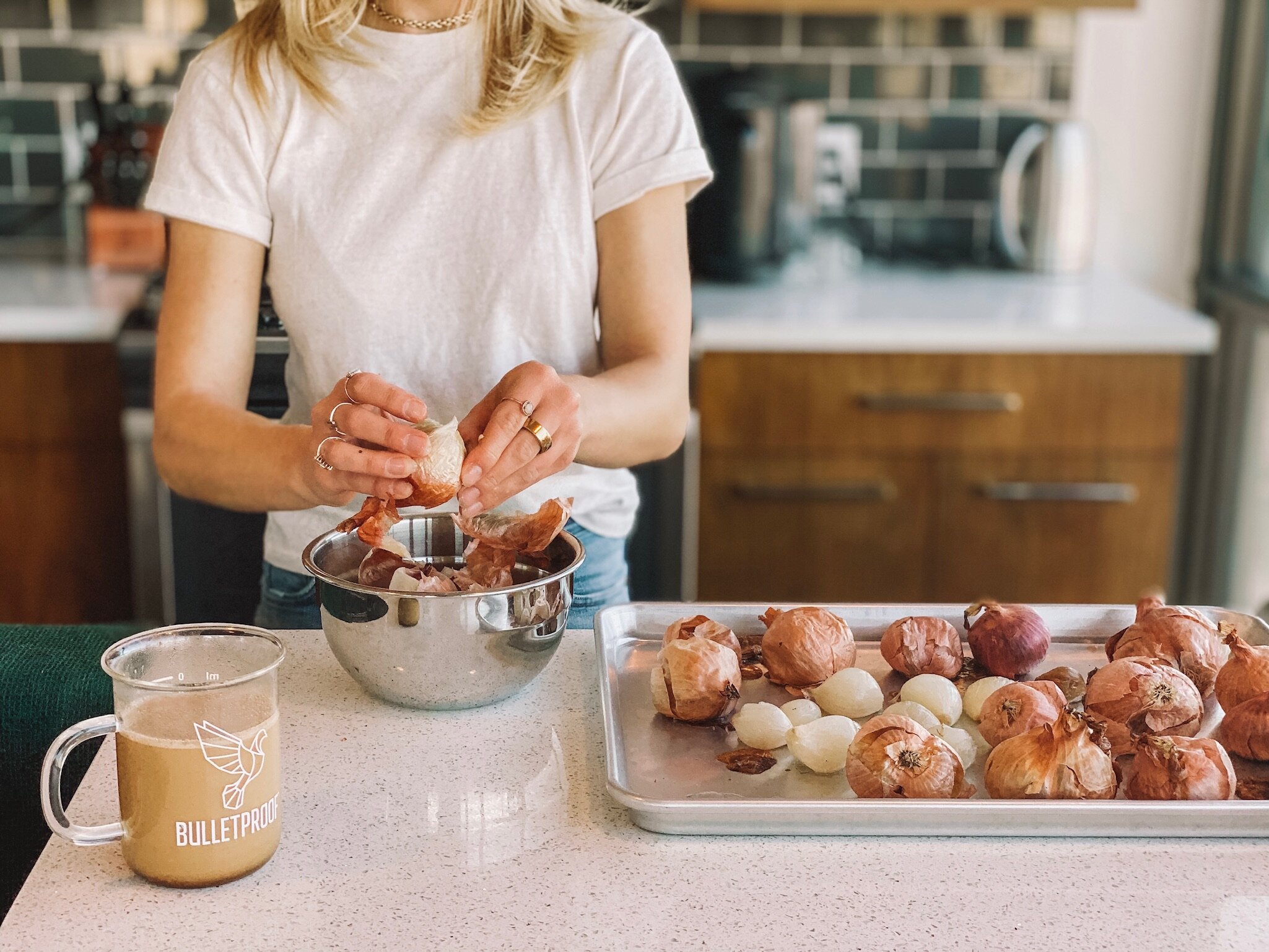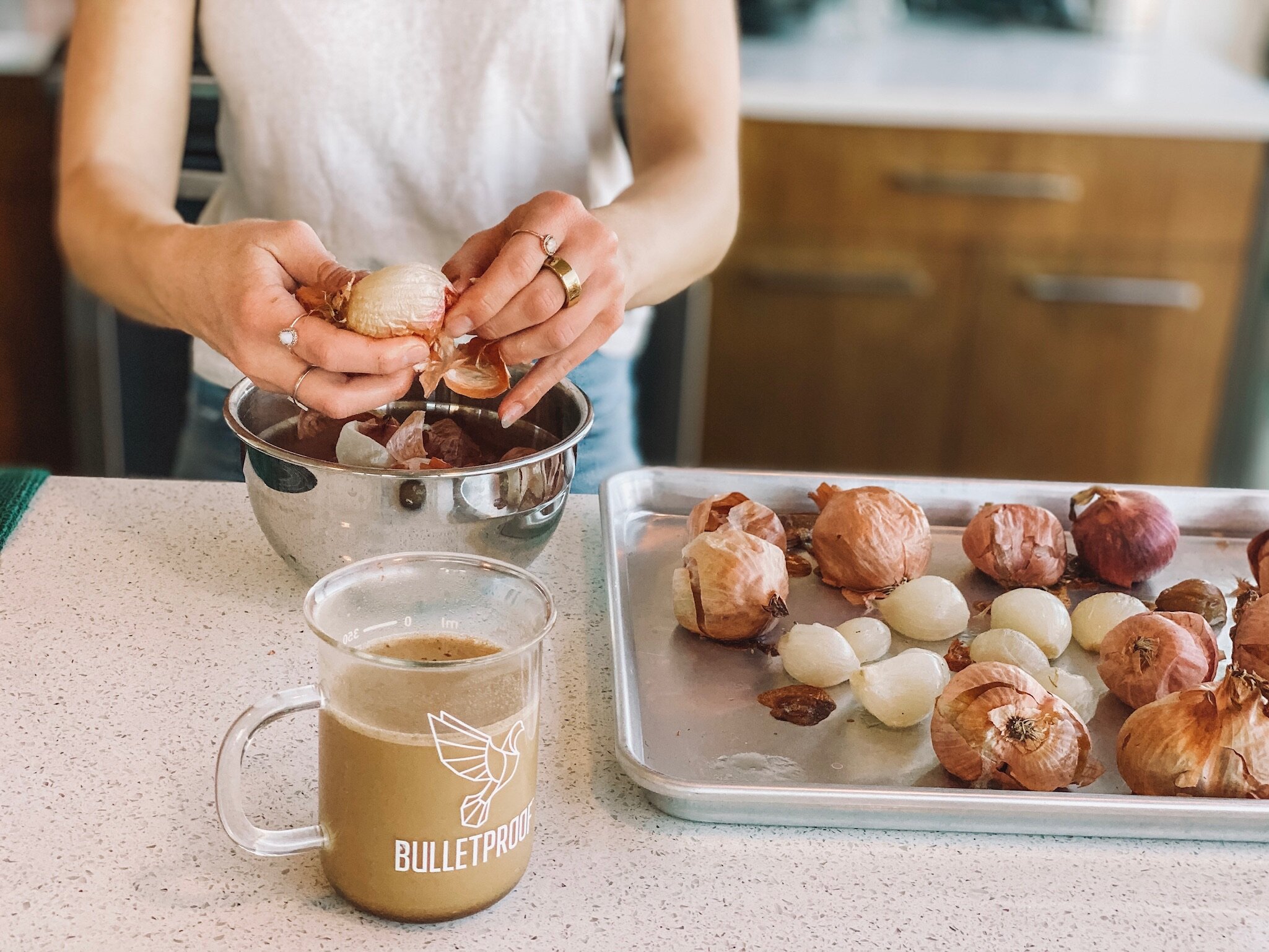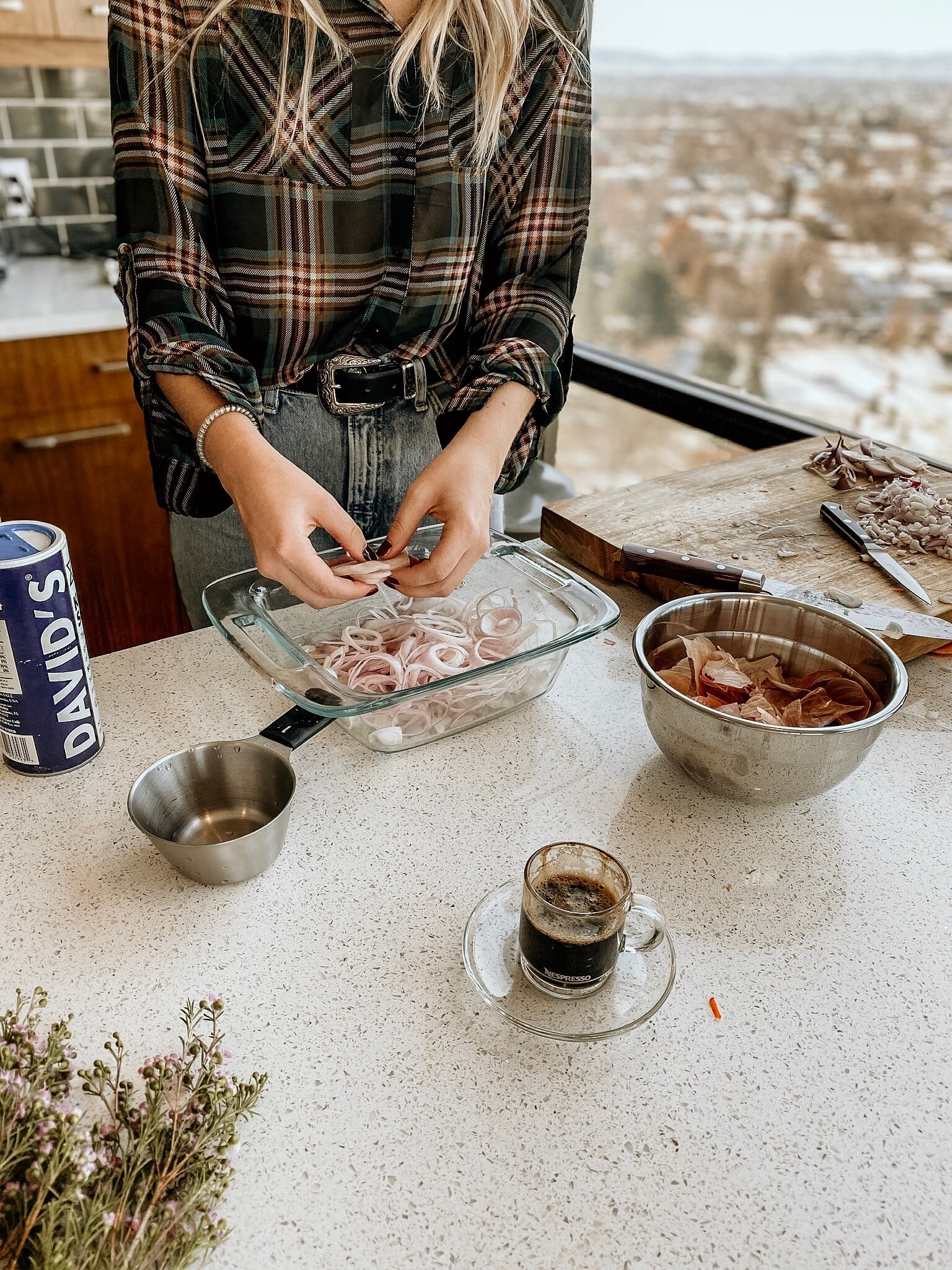Shallots. La Salle Shallots. Golden pink mini onions. These elegant, chef staples can now become your elegant, meal staple. We are giving you the 101 on all things shallots.
Now, we refer to our shallot crop as La Salle Shallots. Why? The Strohauer family grew up in La Salle, Colorado, we grow them in La Salle, Colorado, and I mean, is that just not the perfect name for them? Like seriously :)
I Shall-Lot and Shall-Not
I shall-lot begin using shallots instead of onions, but I shall-not sub them in at the same ratios expecting the same taste results
I shall-lot be gentle with these mini beauties, but I shall-not worry about using them right away when they store so well for months at a time
I shall-lot crisp them up for a topping on pretty much everything
I shall-lot roast them for the easiest, most delicious and elegant side dish ever
Shallots 101
Shallots are typically preferred by chefs over onions on many recipes because they don’t overtake the dish. They are powerful without overpowering. Also, for those days you channel your inner Julia Childs and are cooking a French dish, shallots are actually preferred. Always. All complex French sauces are based on shallots and not onions. Shallots are a staple for the French.
Now in France, the shallots are elongated and generally one bulb, where here in the U.S. of A. we have these shallot bulbs that resemble garlic where they are more rounded. Times are officially changing. Since 2018, our farm has grown both varieties. We actually get our shallot seed from the Aussies :)
Shallots are not just mini red onions. They are cousins to onions, but they are definitely not an onion. They are so much more. Skins of golden pink with a purple white flesh. Beautiful. As mentioned, they come in 1-2 bulbs, like garlic, but they don’t necessarily taste like garlic. They have hints of garlic, less intensity than an onion and a little bit of sweetness. More of a delicate, sweet flavor with hints of garlic notes. A hint of sharpness. Onions bring more heat and intensity. This lighter flavor profile is what makes them the perfect base for sauces and condiments.
You can substitute shallots in for almost any recipe that calls for onions - and many that call for garlic too! You’ll usually need 2-3x more shallots than what is required of an onion for a recipe substitute, though. Always keep that in mind.
Allergic to onions? Try shallots - they make a great substitute.
Crying every time you chop an onion or shallot? Cutting the stem of the onion is what makes you cry, so save that for last!
Hate onion breath? Shallots are your answer. Roast them and you have absolutely zero onion breath. This is what also makes them a great raw companion for a salad at work, especially a tomato salad.
Buying Shallots
Shallots should feel heavy for their size and absolutely firm with dry, papery skins. They should feel hard when you press them. Like an onion. Avoid any that are sprouted or have soft spots.
Storing Shallots
Kept in a cool, dark and dry place (not the fridge, where moisture lives), shallots will stay good for months. Even 6 months or more. Also best not to keep them stored next to potatoes. When in close proximity to each other, both onions and potatoes give off gases that can make each other deteriorate faster. You also want to store shallots away from light.
Peeling Shallots
I have found the easiest way to peel a shallot is by first taking a paring knife to cut a long line down the underside of the shallot skin. This will give you a gentle opening to begin peeling. Remember, be gentle with these guys. Shallots are delicate, and you want to avoid damaging the flesh.
Chopping and Slicing Shallots
Shallots do resemble an onion the most when you start cutting into them.
Once you’ve peeled a shallot to reveal that beautiful purple-white flesh, start by cutting the end off. Leave the top / stem / root on for easier chopping. You want to cut off as little as possible. Think of this step as just carving off the end.
Now we are dicing or chopping a shallot like garlic. While holding that stem, slice along those purple vein lines but not all the way up to the stem where you’re holding. Now slicing horizontally (opposite direction of first cuts), cut about 3 slices towards the stem from the underside up. For this to work well, you really do need a fine, sharp blade here. I’d recommend a chef knife. It’s a game changer. Finally, for the best part, you can just start chopping down from the top - opposite direction of the flesh lines - to have very finely chopped shallot. Chopped or diced shallot like this is usually prepared when making sauces. It gives that quick fragrance where you want to diffuse in the pan very quickly.
Thinly slicing the shallot is also a great option. For this, it helps to chop off both ends initially. Follow the vein stripes on the purple flesh to thinly slice, and you’re golden. Thinly sliced shallots are great raw on salads or crisped up as a topping for SO many dishes. You’d be amazed at how this addition elevates a meal.
*pro tip ~ never chop a shallot with a food processor or any type of machine. It will taste bitter. Always chop by hand, ideally with a chef knife
Cooking with Shallots
Looking for the most bang for your buck? Simple yet absolutely delicious? Shallots are seriously probably the easiest dish to make AND also elevate your meal to a whole new level. Roasting shallots just became your best friend.
Roasted Shallots
Roast shallots in their skins. Why? The skins contain and retain their juices and flavors throughout the entire cooking process. It also keeps them intact. How beautiful is that! Nature providing. Simplistic beauty. I just love that.
GO SLOW. That’s the key. Place as many shallots as you desire, skins still on, across a baking sheet. Give each of them room, though. You don’t want the shallots touching each other. Roast in an oven at 300°F for approximately 2 hours, or until skins are deep golden brown and a knife easily pierces flesh. If you pinch them, they should be soft to the touch and some of their juices oozing out a bit. If you’re in a hurry, increase the oven temperature to reduce the cooking time. 45 minutes to 1 hour can be plenty of time for roasting as well, but the slower the better.
Throw these babies in the fridge to cool down - which then makes them so easy to peel. Once peeled, you’ll have these white juicy shallot bulbs, 1-3 per shallot, to serve. You can serve them just like so, but you can also toss them in some balsamic vinegar and top with fresh parsley. You can even toss them in melted butter, sea salt, pepper and some freshly chopped parsley. Yummm
Roasted shallots are ideal for adding to stews or broths as well.
*pro tip ~ save your roasted skins in the freezer to add to a future homemade bone or veggie broth. They add amazing flavor, release beneficial nutrients only contained in the skins and you’re reducing food waste. We like to say that being a farmer is all about being resourceful ;)
Crispy Shallots
Chefs love crispy shallots. These fried guys are thrown on top of so many wonderful dishes. Chef Mark Bittman’s favorite garnish is fried shallots. Below is his process to frying these slices up!
Thinly slice shallots or use a mandoline. Add 1/2 cup of high-heat oil (we love Colorado Mill Sunflower oil) to a deep fry pan at medium high heat. Add the shallots, stirring continually. Fry for about 5-7 minutes, or until golden brown and the rings have separated. Dry on paper towels and that’s it! Cooking with shallots is seriously so so easy.
Now, crispy shallots - the easy way. Thanks Chrissy! We love having a time-saving preparation method when in need.
Chrissy Teigen’s Crispy Shallots
Makes about 2 cups; Active Time: 7 min; Total Time: 15 min
2 cups thinly sliced shallots
2 cup high heat oil
Kosher salt
Once sliced, scatter the shallots evenly in an 8 x 8-inch glass dish. Pour the oil over the shallots and microwave on high until the shallots are browned and crisp, 10-15 minutes. (Begin checking them at 8 minutes as they can darken quickly.) Quickly and carefully drain the shallots in a fine-mesh sieve set over a bowl to catch the oil. Transfer the shallots to paper towels and season with salt. Let cool completely. The shallots will keep in an airtight container for a week. Store the oil in an airtight container in the fridge for up to 1 month.
~ recipe adapted from Chrissy Teigen’s Cravings For More cookbook
If you want to watch the real pro cooking up crispy shallots in the most elegant of ways, check out this short Gordon Ramsey vid here.
Shallot Au Jus
Here’s another delicious suggestion for preparing shallots. In a sauté pan, add butter and allow it to brown. For the fun part, add whole shallot cloves / bulbs. Not chopped. Just throw the entire bulb in after you’ve peeled your shallots. Add a little more butter and a pinch of a high-heat oil. Salt and pepper - but not too much salt. Ideally some chopped thyme. After they’ve sautéed for a few minutes, add veal juice or some bone broth. A fair amount. You want the shallots to be halfway submerged in the juice. Have your oven at 300°F - 325°F. Roast your shallots in your oven-safe sauté pan (we love this professional copper sauté pan from Williams & Sonoma that complements the color of the shallots so perfectly) for 30 minutes. If you only have 15 minutes or so, increase the heat to 375°F - 400°F. The shallots will still turn out perfectly delicious. Once these bulbs are tender enough to eat, serve and enjoy. The great thing about this recipe too is you now have this wonderfully roasted sauce you can top over steak. You can also serve the roasted shallots topped with the juice and fresh parsley. This is a great veggie side dish to go alongside a grilled or roasted meat. You can also just roast the shallots in the broth and come out with something delicious, but the browning them to flavor first does have this more incredible taste.
Balsamic Roasted Shallots
You’ll want a disposable steam pan for this recipe because otherwise this type of high heat roasting with oil can stain your pots and pans. Lay whole peeled shallots all across the bottom of the pan. All of your shallots need to be hitting the bottom. They can’t be stacked on each other. Add ½ cup (4 oz) of balsamic vinegar. Add a high-heat oil until the oil is halfway up on your shallots. Cover your steam pan with foil and really make sure to seal all the edges. Roast your shallots for 30 min at 450°F. Mmmm. These are beautiful on top of a salad. You can use the oil too as a salad dressing. Simple yet elegant.
Shallots Continued
Bon Appetit’s November 2019 magazine had this great 1-pager on shallots (thanks Alex Beggs!) that we had to include here, of course, sprinkled in with our own thoughts :) Enjoy ~
Chop and add roasted shallots to:
Yogurt (for chip dip or fine veggies)
Mayonnaise (for your new favorite sandwich condiment)
Vinaigrettes (for mellow, not biting, allium flavor)
Mashed Potatoes! (for some extra oomph - why not?)
Pickle ‘Em! Quick-pickled shallots add acidity and crunch to salads and roasted veg. Here’s how to make them: Toss 1 thinly sliced large shallot in a small bowl with 1/4 cup red wine vinegar, 1 tbs sugar and 1/2 tsp kosher salt; let sit, tossing occasionally, 5 minutes.
Why We Love: Fried Shallots
Fried shallots are enjoyed across Southeast Asia as an all-purpose topper. Sprinkle them on breakfast tacos, soups, dips, potato salads and avocado halves.
How should you cut shallots? A Personality Test
Diced - you prefer order, balance, and equally distributed flavor in the universe. Best added to vinaigrettes and pan sauces for a subtle bite.
Rings - you see the world as it is, cyclical and predictable but greatly improved when fried. Best as a raw, pickled or fried garnish.
Matchsticks - you will go to great lengths for beauty and perfection, and it will be worth it: you pack a punch. Best showed off raw as a pretty topping.
Whole - you don’t have time for knives, and the world accepts you as you are. Best peeled and glazed as a side dish or roasted under a chicken.
Savory Simple’s way of incorporating shallots is so spot on here too ~
When shallots are used raw, their flavors truly shine. Try adding some finely minced shallots to a vinaigrette; they’ll provide a slight crunch in addition to their sweet, garlicky flavor. I’m also a fan of adding them to a classic bruschetta topping; they pair perfectly with sweet, summer-ripe tomatoes.
You can also slice them very thinly and add them directly to salads. They can almost always be substituted for raw red onions in recipes where you want to make the onion flavor more subtle (like guacamole).
But this doesn’t mean there aren’t plenty of amazing ways to cook them as well! For example, try sautéing together some finely diced shallots, mushrooms, and garlic in butter or olive oil. In no time you’ll have an amazing topping for crostini or pasta.
Or, for something a bit more advanced, try fried shallots, which are the perfect topper for casseroles, dips or salads.
Savory Simple has this incredible bacon jam recipe with shallots, coffee, maple syrup that you can use on eggs, in sandwiches, as a dip or dressing, added to pasta or even tossed with roasted vegetables.
Who is the Lady of Shallot? I think you mean Shalott, and that’s a poem by Alfred, Lord Tennyson. No relation.
AND our favorite line from Alex’s guide to shallots ~ “I learned that shallots and other guys who make you cry when you cut them are called LACRIMATORS. Perhaps you’ve dated one!”



